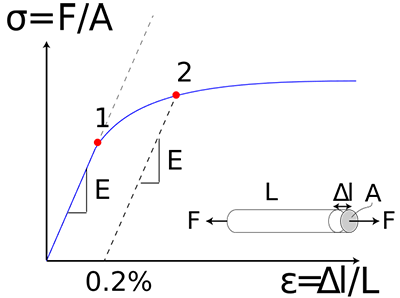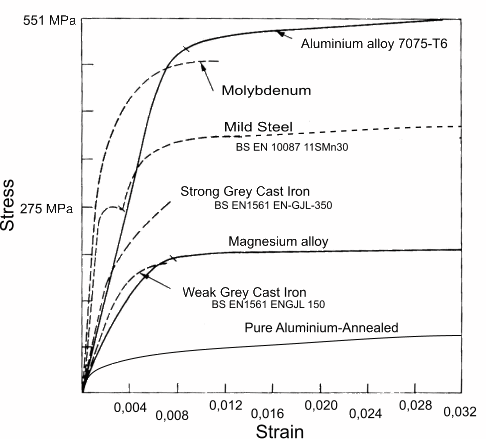Sags & Tensions of Span Attachments
Understanding your Material
To have some assurance on accuracy of results, it is essential to understand the material you are using and how it behaves under various circumstances. For Sags and Tensions of wires and self-supporting cables, this is very important as they do not behave in a linear fashion. Regardless of the material used (steel, aluminum, copper, fiberglass, Kevlar yarns, etc…) all materials have nonlinear characteristics that significantly impact the final results. This importance is compounded further when more than one type of material is present in the wire or cable.

This generic curve shows some important principles that are common to any material you are using:
- There needs to be some amount of elongation of the material/wire/cable in order for it to be under tension; even if it is barely measurable. In the figure above for a sample of material of length L, this is shown as ΔL.
- The ratio of the change in length to the original length is called "Strain".
- The more Strain that exists, the higher is the tension and stress in the material (stress = Force/Area)
- The slope of the Stress/Strain curve at any point (Stress/Strain) is known as the Material's Modulus of Elasticity. It can be evaluated as an average value over a certain range, or at a specific point on the curve.
 The shape of the Stress/Strain curve for different materials can be completely different. They can useful in providing insight into how the material will behave in your application. Here are a few material examples:
The shape of the Stress/Strain curve for different materials can be completely different. They can useful in providing insight into how the material will behave in your application. Here are a few material examples:
In all types of material there is a region of stress (force/cross sectional area) where the material is almost perfectly elastic. That is, it returns to its original length when the load is removed. Beyond this point the wire/cable will be longer when the load is removed than before it was applied. The material is now permanently stretched. The region of stress in the curve where this permanent stretching happens is called the "plastic" region. Within this region the material can undergo what is called "Strain Hardening", which may allow the material to handle additional stress up to what is called the Ultimate Tensile Strength (UTS), where it breaks. Rated Tensile Strength (RTS) values provided by manufacturers are the guaranteed performance values; which are lower than the expected UTS of individual samples.


